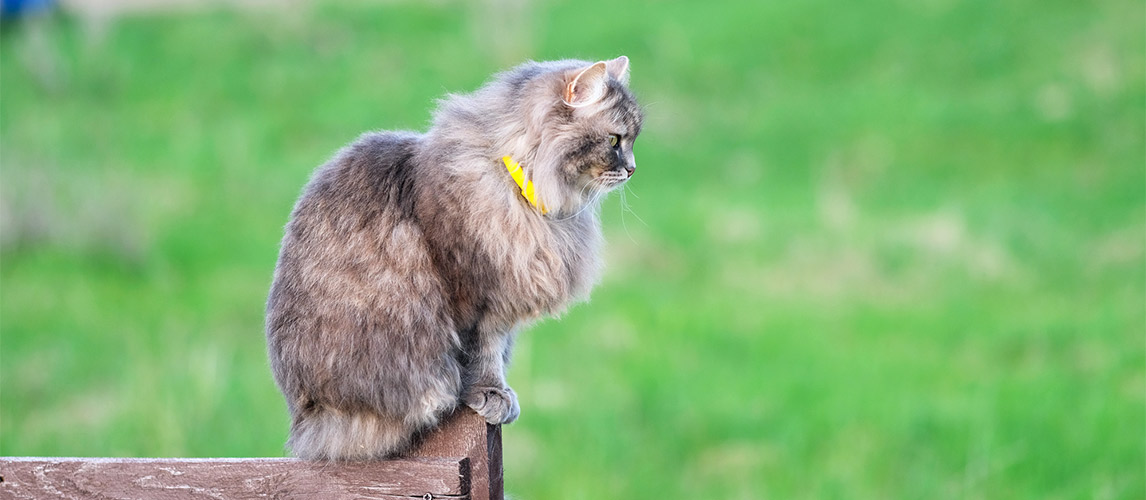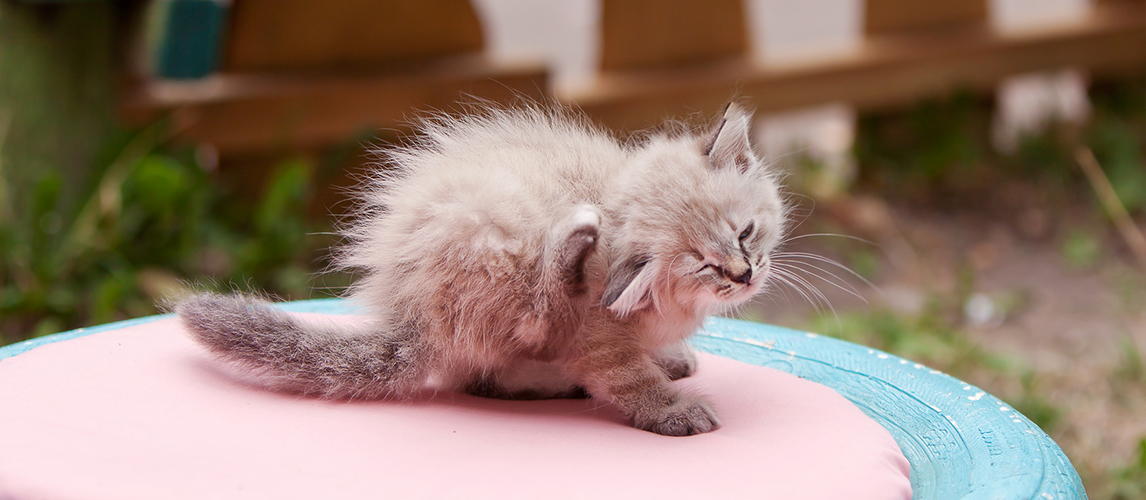Does your cat’s breath smell? Nobody really expects their cat’s breath to smell minty fresh, but if your cat’s breath smells particularly bad, it may indicate a problem. Bad breath, known as halitosis, can be caused by a variety of things, which are prevented and treated in different ways, from a good clean with a cat toothbrush and cat toothpaste to complex medical intervention. It is important to understand what may be causing your cat’s bad breath so that it can be treated appropriately.
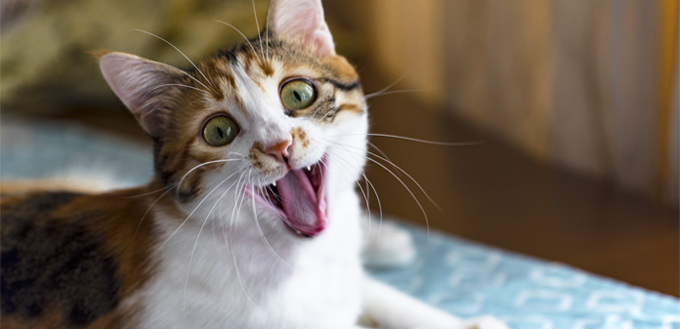
Bacteria Build-up
Bad breath in cats is most often caused by a build-up of bacteria in their mouth which produces an odour. This bacteria can be a result of dental disease, gum disease or a build-up of plaque and tartar, much the same as for humans. As with humans, the food we feed our cats can make a difference to their dental hygiene. Also like humans, cat’s teeth can be kept nice and clean with regular brushing and good preventative care.
- Treatment
As with most things, the best cure is prevention! If we take care of our cat’s teeth from a young age, it will help to keep them in top condition throughout their life and prevent the bad breath that results from poor quality dental hygiene. It is important to take your cat to the vet for regular check-ups. Your vet will monitor your cat’s teeth, gums and breath to ensure there are no causes for concern and no unusual changes. Your vet will also check for any underlying medical issues which may cause bad breath. The two most important things an owner can do to prevent bad breath are ensuring a suitable diet and brushing the cat’s teeth regularly. If left untreated, gum disease and excessive tartar can both lead to infection and loss of teeth.
- Diet
It is believed that feeding only wet cat food does not provide enough abrasive action against the teeth when chewing. In fact, wet food itself may accumulate around the teeth and encourage bacteria and plaque formation. Dry cat foods tend to be more abrasive and also encourage chewing. Some special diets are available which are specifically aimed to prevent plaque and tartar formation, and subsequently bad breath. These diets are designed to increase tooth penetration and provide a more abrasive action against the tooth.
- Tooth Brushing
The thought of brushing your cat’s teeth may fill you with terror, but like lots of things, if you start slowly and carefully, your cat will soon get used to it as part of its regular routine, particularly if you start while your cat is a kitten.
It may be advisable to ask your vet to show you how to brush your cat’s teeth at first. They will probably recommend a finger toothbrush initially, to get your cat used to the feel of having something in its mouth that isn’t food!
Toothpaste for cats is readily available and is usually flavoured with chicken or fish to make it as palatable as possible. Never use a human toothpaste as the fluoride can make your cat seriously ill if ingested.
It may be helpful to choose a particular time of day for brushing your cat’s teeth so that you can make it a regular part of your daily routine. Choose a time when you and your cat are both likely to be most relaxed.
Start by putting a small amount of the toothpaste on your finger to see if your cat will lick it off. Once the cat is familiar with the taste and feeling nice and relaxed, try running your finger along the gum line. You can apply different pressures to the gum line and observe how your cat reacts. It is very important to take it slowly.
If your cat seems happy with this, try with the finger toothbrush. These fit over the end of your finger like a thimble and are usually double-sided. Be really gentle.
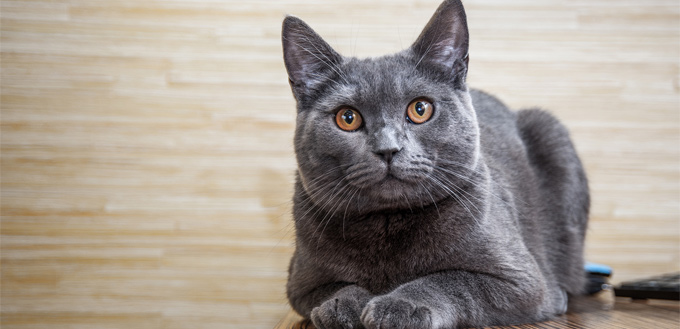
A finger toothbrush is often sufficient but if your cat is really relaxed with this, you may be able to move on to using a proper toothbrush. Remember that a cat’s mouth is much smaller than a dog’s so be careful not to cause any harm trying to manoeuvre a toothbrush in such a small and delicate space.
If your cat shows any signs of distress throughout this process, give him a break for a few minutes before trying again. If your cat remains calm and relaxed, reward it with lots of praise and back scratches. You may also want to offer a treat but ensure it is a healthy treat and not something that will harm his teeth and undo all your good work!
You May Also Like: Cat Treats and Calming Cat Treats
Failure to perform regular dental care may result in a build-up of plaque and tartar in your cat’s teeth that is impossible for you to remove. This plaque and tartar harbours bacteria which makes your cat’s breath smell. In this instance, your cat will need to visit a vet for a thorough clean under anaesthetic.
The vet will usually take x-rays first to establish if there are any broken, infected or dead teeth or any abscesses. The vet will then perform a thorough clean below the gum line and professional scaling or scraping of the teeth to remove plaque. Lastly, the vet will polish the crown of the teeth which leaves a completely smooth surface to discourage plaque and bacteria from sticking to the tooth.
The most likely cause of bad breath in cats is bacteria build-up, however, it is important to note that persistent bad breath can also indicate more serious medical problems, possibly involving the respiratory system, gastrointestinal tract, liver or kidneys.
If your cat shows any of the following signs, or any other symptoms alongside bad breath, you should probably get them checked out by your vet…
- Breath that smells like urine – could indicate kidney disease
- Sweet or fruity smelling breath, drinking and urinating more often than normal – could indicate diabetes
- Foul smelling breath, yellow-tinged gums or eyes, lack of appetite, vomiting – could indicate a liver problem
- Excessive tartar on teeth, red inflamed gums, drooling, difficulty eating, pawing at mouth – could indicate serious dental or gum disease
Diabetes
If your cat’s breath smells a little fruity, it may indicate diabetes. Other signs of diabetes include your cat drinking and urinating more and losing weight despite eating lots. Overweight cats are more at risk of diabetes than those with a healthy weight and body shape.
- Treatment
Diabetes in cats is managed with a combination of diet and insulin injections. This may seem a daunting prospect but most cats usually get used to the injections and the manufacturers of the injections make them as user-friendly as possible. Your cat will need regular monitoring to ensure that it is receiving the correct dose of insulin. It is important to diagnose diabetes quickly so if your cat shows any of the symptoms mentioned, you should make an appointment with your vet for further investigations.
Kidney Disease
If your cat’s breath smells like ammonia or urine, it could indicate that your cat has kidney disease. The kidneys are responsible for removing toxins from your cat’s system and bad breath may be a sign that toxins are building up because the kidneys aren’t working properly. Kidney disease is relatively common in cats over the age of eight. Cats with kidney disease may also appear lethargic, may drink and urinate more and may lose weight. If your cat shows any of these symptoms, they should be checked out by a vet who will most likely take a blood test and a urine sample for a urinalysis test. Some vets offer urinalysis tests as standard for older cats.
- Treatment
Kidney disease can usually be managed with dietary modifications – specific foods for cats with kidney disease contain lower levels of phosphorous. Secondary issues arising from kidney disease such as anaemia and high blood pressure may need to be treated separately. Secondary issued may require hospitalisation for further medication, fluids and close monitoring. As with other conditions, it is important to diagnose kidney disease as early as possible so that it can be treated with dietary modifications before any other symptoms develop.
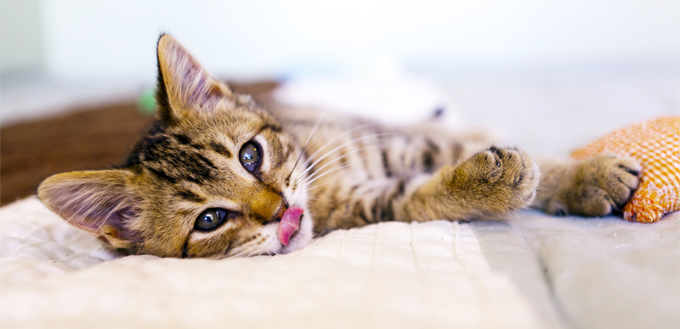
Lymphocytic Plasmacytic Stomatitis
In some cases, foul smelling breath is caused by a condition called lymphocytic plasmacytic stomatitis, which is a serious inflammation of the mouth that causes odours and extreme pain. This condition is often associated with feline leukemia virus, feline immunodeficiency virus, calicivirus, or Bartonella, and other infections and cats usually present with sore, swollen, bleeding gums. The feline calcivirus may cause stomatitis (inflammation of the mouth and lips) and gingivitis (gum disease), both resulting in bad breath. It may also cause respiratory infections, resulting in discharge from the eyes, a runny nose and sneezing.
- Treatment
Treatment usually involves cleaning and removing the affected teeth and sometimes antibiotics. Some of the viruses that are linked to this condition, such as calcivirus, are very contagious, but fortunately there is a vaccine available to protect against them. It is important to get your cat vaccinated as early as possible and to keep up with regular vaccinations.
Cancer/Tumours
If your cat develops a tumour inside its mouth, the tumour can become infected which can cause bad breath.
- Treatment
Unfortunately, by the time most oral tumours are diagnosed, the prognosis is usually very guarded, however, in some situations the vet may attempt to remove the tumour. The decision will depend on the age and general health of the cat and the position and size of the tumour.
Liver Disease
Foul-smelling breath can also be an indication of liver disease. Cats with liver disease may also be lethargic, vomiting or have diarrhoea. They may have a poor appetite and may have a yellow tinge to their gums or eyes. If your cat shows any of these symptoms your vet will carry out further investigations to determine the cause of the liver disease before formulating a treatment plan.
- Treatment
Your vet will carry out blood tests, an ultrasound scan of the liver and possibly a biopsy to determine the cause of the liver disease. Treatment will usually be a combination of drugs. If your cat is showing more severe symptoms, they may also require other supportive therapies, including intravenous fluids and a special diet.
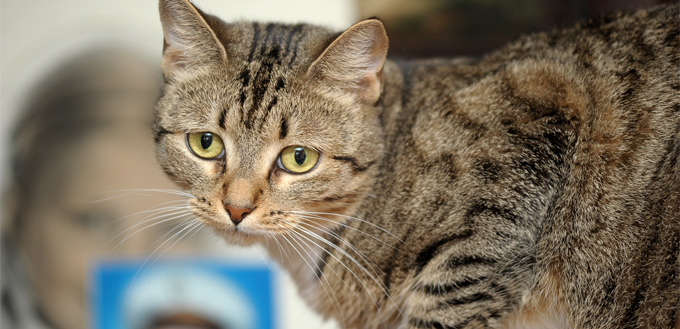
Conclusion
If your cat is fit and healthy, the chances are that their bad breath is caused by a build-up of tartar and plaque between the teeth, harbouring foul-smelling bacteria. At this stage, your cat may need to visit the vet for a thorough teeth clean under anaesthetic. Some of the worst affected teeth may need to be removed.
If your cat has smelly breath and is also showing additional symptoms such as changes in their eating or drinking habits, weight loss or vomiting, you should definitely make an appointment with your vet to rule out any serious conditions. Treatments are available for most of the conditions which can cause bad breath but these conditions are all easier to treat if diagnosed early.
The most important thing is to try to prevent bad breath in the first place by ensuring that your cat receives a good quality, appropriate diet and regular tooth brushing with a suitable toothpaste from a young age.
Sources:
- Five Ways To Clean Your Pet’s Teeth, Animal Humane Society
- Bad Breath: Sign of Illness?, Cornell University College of Veterinary Medicine
- 10 Facts You Need To Know To Protect Your Pet’s Oral (and Overall!) Health, American Animal Hospital Association
Note: The advice provided in this post is intended for informational purposes and does not constitute medical advice regarding pets. For an accurate diagnosis of your pet's condition, please make an appointment with your vet.



